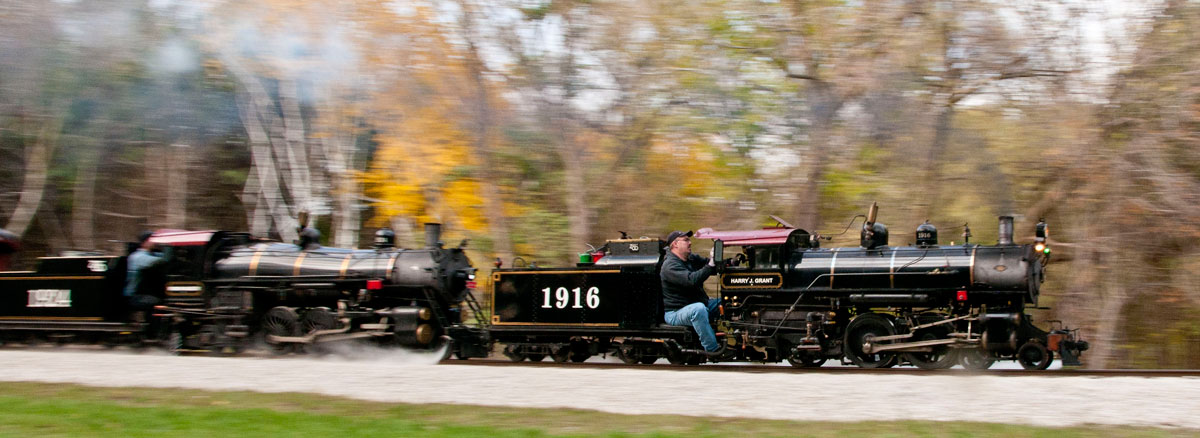The Milwaukee School of Engineering CREATE Institute hosted the first design review of an innovative, multi- high school STEM engineering challenge this week. The program, which is headed up by Learn Deep in collaboration with the Milwaukee County Zoo and the Coalition for Sustainable Rail (CSR) seeks to pilot an innovative education initiative that partners area high schools with colleges to bolster STEM education. With the participation of six local high schools, five colleges, and multiple industry sponsors, this initiative seeks to leverage the Zoo train to spur meaningful tech education. The goal of the initiative is to help schools build the capacity and relationships to collaborate across districts with community partners to take on real world engineering challenges.
“The Zoo’s North Shore Bank Safari Train is one of our most beloved attractions, and something which hundreds of thousands of visitors ride each year,” explained Chuck Wikenhauser, Director of the Milwaukee County Zoo. “We are excited to have the Zoo train serve as a tool to engage local schools and universities in a collaborative learning opportunity that will both improve our railroad at the Zoo and create lasting learning experiences.”
During the project kickoff, Joost Allard and Pete Reynolds of LearnDeep addressed the crowd of 85 high school students and 10 industry reviewers.
The driving vision for this effort is to have Milwaukee area students design and fabricate an advanced steam locomotive powered by renewable fuels. That’s too big a challenge to take on off the bat, so over the next few years, students will complete projects of increasing complexity related to the Zoo train. Students are working this year to design and fabricate a replacement for the wooden water tower that services the steam train.
“Our goal with Learn Deep is to find opportunities to build connections across schools and industry to develop meaningful learning opportunities, and this effort with the Milwaukee County Zoo is our most exciting initiative to-date,” said Pete Reynolds, Co-Founder of Learn Deep. “The initiative taps into the energy and enthusiasm of educators who want to see their students do great things. It has also allowed industry and university partners to easily see where they can plug in to support innovative efforts in education that have a community-wide impact.”
This semester, students completed conceptual designs for a new water tower. They shared their designs, decisions, and processes with teams from other schools before a review panel hosted by MSOE on December 10th. In spring 2019, students will take what they learned from the review session to complete detailed designs which will be presented for review at an event hosted by UWM in early May. At that event a design approach will be selected.
“We strive to find opportunities for our students to connect with the community and dive deeper into developing both the mindset and skillset they need to become responsible professionals. MSOE’s faculty often work directly with community partners like the Milwaukee County Zoo. However, this project offers a unique opportunity for our students to mentor high school students while working to add value to the community. All stakeholders involved owe this opportunity to the coordination efforts and vision of Learn Deep,” explained MSOE CREATE Institute Director DeAnna Leitzke, P.E. “Furthermore, this project is unique in that it allows high school students to interact with clients, practitioners, tradespeople, college students, and professors to solve a real world problem. This enables high school students to experience both academia and the trades, helping to inform their decisions post high school in a way that encourages equally the pursuit of higher education or skilled craft.”
Detailed engineering will happen in a boot camp over the summer, and schools will fabricate parts during the fall semester of 2019, for installation by spring of 2020. Fall 2019 will also see the kick off for the next phase of the project-- design and fabrication of an automated coal handling system.
Interesting the future in the rail industry is one of the key goals of this initiative. Kalmbach Publishing Co. was kind enough to donate dozens of magazines for the students to take home with them.
Throughout the effort, participating students have the chance to visit university and industry partners for on-site workshops related to the project. This semester students attended a design thinking workshop hosted by Briggs & Stratton’s Concept Design Team, and a workshop on structural engineering considerations for the water tower hosted by MSOE. Teams are also supported by engineering students from partner institutions, as well as a pool of industry mentors.
“Following previous biofuel research we did with the Milwaukee County Zoo with its steam locomotives, we are excited to assist in this education program, in large part as it serves as a means to familiarize a new generation with railroads,” said CSR President Davidson Ward. “The rail industry overall is facing challenges attracting new talent in the face of retiring baby boomers, and the ability to engage a new generation with the concept of railroading, even on the scale of the Zoo train, is something that is both important and meaningful.”
Learn Deep serves as the overall coordinator of the program, with support from the Zoological Society of Milwaukee. The partners seek the involvement, engagement, and support of local industries and philanthropists. Should you be interested in learning more and/or supporting this work, reach out to Pete Reynolds, Learn Deep.



























![Members of the CSR / Zoo research team pose in front of the two steam locomotives operated by the Zoo.• People, from left to right: Davidson Ward [CSR]; Ken Ristow [Zoo]; Rob Mangels [CSR]; and Wolf Fengler [CSR].• Locomotives, from left to right: 4…](https://images.squarespace-cdn.com/content/v1/55e5ef3fe4b0d3b9ddaa5954/1481042813715-4IUMEM6JHWKHEUSFE40J/image-asset.jpeg)